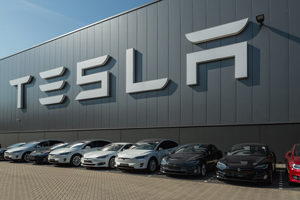President Trump's threat to slap tariffs on an additional $200 billion in Chinese goods entering the U.S. has spooked financial markets and boosted fears that a full-blown trade war could break out.
Here's what American shoppers and 401(k) investors need to know about trade wars and the potential impact on their personal finances:
What is a trade war?
It's not a military fight; it's an economic brawl.�
Simply put, it is "a situation in which two or more countries raise import taxes ... to try to protect their own economies," Cambridge Dictionary says. The downside? It can cause economic growth to slow, reduce sales of goods that cross borders, and result in higher prices for consumers and lower profits for companies. Ultimately, it could�lead to fewer jobs if the economic hit is sizable enough and businesses are forced to cut their work force.
More Money: Stocks drop, wipe out gains for the year after new Trump tariff threat
More: Ask HR: What can you do about workplace vulgarity? And how many work hours is too many?
More Money: CVS�launches prescription delivery nationwide
Can a trade skirmish affect my investments?
Yes. Professional investors have a far more favorable view of free trade than they do restrictions that reduce the free flow of goods between countries. The big risk to stock�investors is if the trade dispute causes the confidence of CEOs and investors to decline. Why would that happen?�If the economy's growth takes a hit, it�means fewer profits for companies that sell goods, including�smart phones,�strawberries and electric cars.
Those fears, for example, are a big reason why the Dow Jones industrial average fell as much as 420 points�Tuesday, or 1.7%. The Dow's gains for the year have been wiped out.
U.S. companies most at risk are those that export a lot of goods overseas, such as technology firms and heavy-equipment makers,�as well as companies that import Chinese and other foreign parts and products needed to complete finished goods.
What's Wall Street worried about?
Investors worry that�tariffs on a broad scale could�morph�into a threat to Americans' finances that goes beyond paying a little extra for a cigar, a bottle of whiskey or�other everyday items expected to�rise in price due to import taxes.
In fact, the U.S. decision Friday to move ahead with tariffs on $50 billion of Chinese goods�and the latest threat of $200 billion more could potentially put workers' investment portfolios and jobs in jeopardy if the trade tiff�intensifies and�a trade war ensues.
The big risk is if Trump's�preemptive strikes in the tariff conflict are followed by continued counterstrikes by Beijing�and others, such as Canada and the European Union, causing the disagreement to spin out of control and undermine investor and CEO confidence in the economy and markets.
"It's the indirect effect on confidence that matters," says Michael Gapen, chief U.S. economist at the New York�offices of Barclays, a British bank.
What's at stake for consumers?
There's a lot more at stake for consumers than price inflation at the cash register, Gapen says.�It is far worse for them financially if the trade fight causes the economy to slow, businesses to stop hiring or start firing, and markets to�tumble enough to set�people's retirement accounts back. The trade spat could undo much of the economic good set in motion in December by�the tax cuts.�
What are Wall Streets pros watching?
Market pros�are waiting and watching to see how the high-stakes negotiations play out.
"One of the most significant worries for the U.S. economy and markets is the possibility of a prolonged volley of threats and retaliation," says Quincy Krosby, chief market strategist at Prudential Financial.
The U.S. threat to hit China with additional tariffs on top of those already put in place -- and China's move to fight back with tariffs of its own -- is exactly the type of escalation that investors�fear.
More: Trump threatens to slap new tariffs on $200 billion in Chinese goods
More: Stocks set to drop after new Trump tariff threat
More: How Trump's planned steel, aluminum tariffs affect you
Will Americans pay more for goods they buy?
Yes. But it won't be a budget buster, at least not yet. The total amount of imported goods bought�by Americans represents just a sliver of their�overall purchases. Imported purchases, Gapen notes, only account for about 6% of the consumer price index, which measures prices Americans�pay for a basket of everyday goods, such as groceries, gas and medicine.
But that doesn't mean prices on some products will remain the same. Even tariffs on imported industrial products�used to make finished consumer goods in the U.S. will likely result in higher prices -- a tax of sorts -- that will be passed on to consumers, says Chris Rupkey, chief financial economist at MUFG, a Tokyo-based global bank with offices in New York.
"Production costs will go up here," Rupkey says. "Consumers are going to lose and pay a higher price no matter if the goods are consumer-based or industrial supply-chain products."
Is U.S. targeting consumer products with tariffs?
No. In an effort to shield American consumers from the tariffs, the list of Chinese products the Trump administration targeted in the first phase of its tariffs announced Friday�focused mostly on "industrially significant technologies." The initial list, which goes into effect July 6, covers about $34 billion of Chinese goods. The second phase, which is still under review by the U.S., would impose an additional $16 billion of levies.�
The tariff list reads more like a supply-parts buying guide. It includes things like watertube boilers, steam turbines, and can-sealing machines. Consumer-focused stuff was less prominent, but included things like motorcycles and mopeds, as well as LEDs for backlighting of LCD TVs.�
What's the biggest risk?
Escalation of the conflict. More tariffs. And bigger dollar amounts.
The danger of the dollar amount of tariffs imposed by the U.S. on its trading partners rising sharply, and vice versa, is another risk, Rupkey adds.�
Can there be a happy ending?
Many Wall Street pros believe cooler heads will prevail and that the end result won't cause a global recession.
Wall Street is still hoping that the�tit-for-tat trade skirmish is just a negotiating tactic of Trump that will end with the U.S. receiving better trade terms.
"I view all of this as hardball negotiations," says Alan Skrainka, chief investment officer at Cornerstone Wealth Management in Des Peres, Missouri.

 Wall Street certainly agreed – following the news, investors poured money into what's widely been hailed as the car manufacturer of the future.
Wall Street certainly agreed – following the news, investors poured money into what's widely been hailed as the car manufacturer of the future. Tencent's QQ Music, Kugou and Kuwo services seen on the screen of an iPhone.
Tencent's QQ Music, Kugou and Kuwo services seen on the screen of an iPhone.  Vsync (CURRENCY:VSX) traded up 0.5% against the US dollar during the 1 day period ending at 13:00 PM ET on July 7th. Vsync has a total market cap of $1.21 million and $978.00 worth of Vsync was traded on exchanges in the last 24 hours. During the last week, Vsync has traded 2% higher against the US dollar. One Vsync coin can now be purchased for approximately $0.0075 or 0.00000115 BTC on cryptocurrency exchanges including CoinExchange and Trade Satoshi.
Vsync (CURRENCY:VSX) traded up 0.5% against the US dollar during the 1 day period ending at 13:00 PM ET on July 7th. Vsync has a total market cap of $1.21 million and $978.00 worth of Vsync was traded on exchanges in the last 24 hours. During the last week, Vsync has traded 2% higher against the US dollar. One Vsync coin can now be purchased for approximately $0.0075 or 0.00000115 BTC on cryptocurrency exchanges including CoinExchange and Trade Satoshi.  America Movil SAB de CV ADR Series L (NYSE:AMX)’s share price was up 5.3% on Thursday . The stock traded as high as $17.37 and last traded at $17.33. Approximately 4,045,750 shares changed hands during trading, an increase of 52% from the average daily volume of 2,666,568 shares. The stock had previously closed at $16.46.
America Movil SAB de CV ADR Series L (NYSE:AMX)’s share price was up 5.3% on Thursday . The stock traded as high as $17.37 and last traded at $17.33. Approximately 4,045,750 shares changed hands during trading, an increase of 52% from the average daily volume of 2,666,568 shares. The stock had previously closed at $16.46. News headlines about ReneSola (NYSE:SOL) have been trending somewhat positive recently, according to Accern. Accern scores the sentiment of news coverage by monitoring more than 20 million news and blog sources in real time. Accern ranks coverage of companies on a scale of negative one to positive one, with scores closest to one being the most favorable. ReneSola earned a news impact score of 0.14 on Accern’s scale. Accern also gave media headlines about the semiconductor company an impact score of 45.891612814863 out of 100, meaning that recent news coverage is somewhat unlikely to have an effect on the company’s share price in the next several days.
News headlines about ReneSola (NYSE:SOL) have been trending somewhat positive recently, according to Accern. Accern scores the sentiment of news coverage by monitoring more than 20 million news and blog sources in real time. Accern ranks coverage of companies on a scale of negative one to positive one, with scores closest to one being the most favorable. ReneSola earned a news impact score of 0.14 on Accern’s scale. Accern also gave media headlines about the semiconductor company an impact score of 45.891612814863 out of 100, meaning that recent news coverage is somewhat unlikely to have an effect on the company’s share price in the next several days. 

